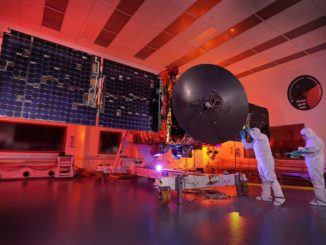
University of California – Berkeley




Live coverage: NASA’s ICON satellite successfully launched
After a 24-hour delay due to poor weather, an air-launched Northrop Grumman Pegasus XL rocket fired into orbit at 9:59 p.m. EDT Thursday (0159 GMT Friday) after release from a carrier jet at an altitude of 39,000 feet over the Atlantic Ocean northeast of Cape Canaveral. The Pegasus rocket carried NASA’s ICON satellite into orbit to collect measurements of the ionosphere.

Pegasus rocket ready for airborne launch with NASA scientific satellite
After a year-long delay to troubleshoot recurring erroneous data signatures from the rudder of Northrop Grumman’s air-launched Pegasus XL rocket, NASA is eager to send a $252 million research satellite into orbit as soon as Thursday night off Florida’s east coast on a mission to probe the ionosphere, a region near the boundary between Earth’s atmosphere and space.



No new date set for Pegasus launch with NASA’s ICON satellite
NASA and Northrop Grumman officials have not set a new target date for the launch of the ICON ionospheric research satellite aboard an air-launched Pegasus XL rocket following a mission abort Wednesday, and it could be weeks before the the long-delayed science probe has another chance to head into orbit off Florida’s east coast.

Live coverage: Pegasus launch scrubbed, carrier jet returns to Cape Canaveral
NASA’s Ionospheric Connection Explorer satellite was scheduled to launch Wednesday aboard an air-dropped Northrop Grumman Pegasus XL rocket over the Atlantic Ocean, but managers aborted the mission after encountering a technical concern with the rocket following departure from Cape Canaveral Air Force Station. The launcher’s L-1011 carrier jet returned to Florida.

